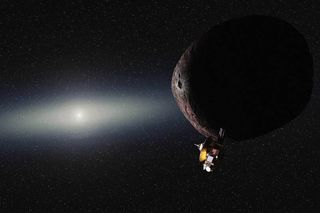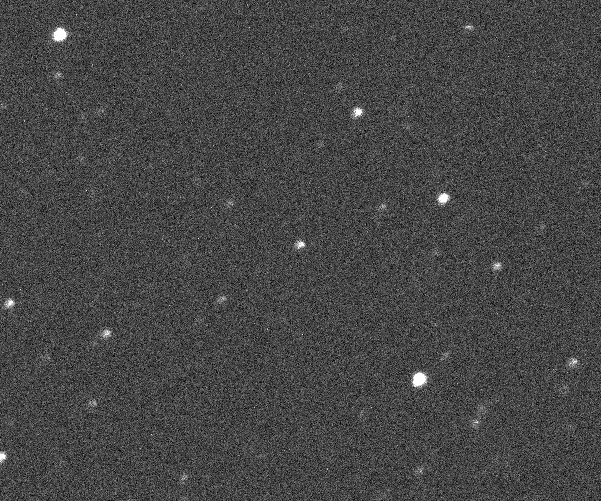
The New Horizons spacecraft's next flyby target blocked the light of an unnamed star on July 17, and mission scientists got a great look at the brief event.
New Horizons — which famously cruised past Pluto in July 2015 — is zooming toward a Jan. 1, 2019, close encounter with a small object called 2014 MU69, which lies about 1 billion miles (1.6 billion kilometers) beyond Pluto's orbit, in the frigid Kuiper Belt.
Not much is known about 2014 MU69. It's tough to observe, because it's so far away and so small — just 14 to 25 miles (22 to 40 kilometers) wide, according to astronomers' estimates. And there hasn't been much time to study the object; as its name suggests, 2014 MU69 was discovered just three years ago. [Destination Pluto: NASA's New Horizons Mission in Pictures]
So New Horizons scientists have been crisscrossing the globe over the past month and a half, getting into position to watch the object block the light of several stars. Such "occultations" can reveal a great deal about the foreground object, including its size and the amount of debris around it, New Horizons scientists have said.
The team planned for, and then observed, three different occultations by 2014 MU69 — one on June 3, one on July 10 and another on July 17. These events were hard targets; each lasted just 2 seconds or so and was visible from a narrow band of sea and land on Earth.

For example, to spot the July 17 occultation, New Horizons team members set up 24 mobile telescopes in remote parts of Argentina. At least five of these instruments captured the moment when 2014 MU69 moved in front of the star, causing the background object to wink out, mission scientists said.
"We nailed it spectacularly," New Horizons co-investigator Amanda Zangari, of the Southwest Research Institute (SwRI) in Boulder, Colorado, said in a statement.
Get the Space.com Newsletter
Breaking space news, the latest updates on rocket launches, skywatching events and more!
Analysis of the data gathered during the three occultations will take weeks, NASA officials said. But it's already clear that the observation campaign — which was coordinated with the help of observations by NASA's Hubble Space Telescope and Europe's Gaia spacecraft, and also involved NASA's Stratospheric Observatory for Infrared Astronomy (SOFIA), a telescope-equipped 747 jet — was a success, New Horizons team members said.
"This effort — spanning six months, three spacecraft, 24 portable ground-based telescopes and NASA’s SOFIA airborne observatory — was the most challenging stellar occultation in the history of astronomy, but we did it!" said New Horizons principal investigator Alan Stern, also from SwRI. "We spied the shape and size of 2014 MU69 for the first time, a Kuiper Belt scientific treasure we will explore just over 17 months from now. Thanks to this success, we can now plan the upcoming flyby with much more confidence."
Follow Mike Wall on Twitter @michaeldwall and Google+. Follow us @Spacedotcom, Facebook or Google+. Originally published on Space.com.
Join our Space Forums to keep talking space on the latest missions, night sky and more! And if you have a news tip, correction or comment, let us know at: community@space.com.

Michael Wall is a Senior Space Writer with Space.com and joined the team in 2010. He primarily covers exoplanets, spaceflight and military space, but has been known to dabble in the space art beat. His book about the search for alien life, "Out There," was published on Nov. 13, 2018. Before becoming a science writer, Michael worked as a herpetologist and wildlife biologist. He has a Ph.D. in evolutionary biology from the University of Sydney, Australia, a bachelor's degree from the University of Arizona, and a graduate certificate in science writing from the University of California, Santa Cruz. To find out what his latest project is, you can follow Michael on Twitter.
